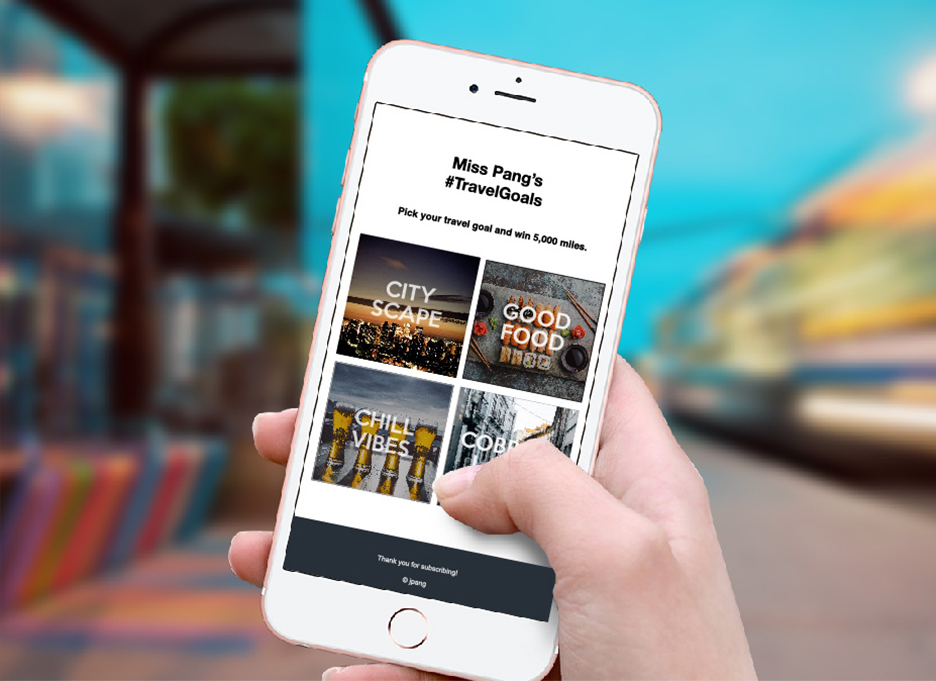Data-Driven UX Series Part 2 of 3
There's more to Personalization
As with Part 1 of the Data-Driven UX Series, personalization is a great conversation starter. But in order to keep the conversation going, I need to engage users and hopefully influence their behavior.
I always begin by understanding users. For some, they prefer facts and figures, pros and cons, whereas others are driven by emotions.
Striking that delicate balance between those two groups can be challenging and is evident for this case study on user acquisition.
What's the Deal with Credit Cards?
Credit card campaigns can get very old nowadays. Typically, you receive either a Direct Mail or email with a cookie-cutter message that says "Apply for our credit card and get offer XYZ. Limited Time Offer!".
But let's be real, when is it not Limited Time Offer?
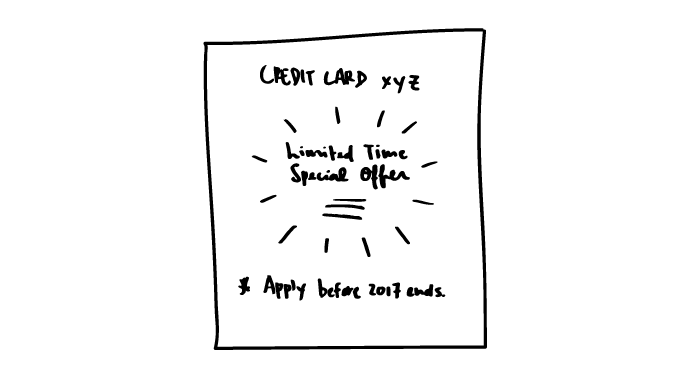
The first and most logical approach is to use machine learning algorithms alike to predict users' likelihood to apply for a credit card. But this doesn't take into account users' emotions and motivations.
To understand members from both qualitative and quantitative aspects, I decided to introduce an two-part Engagement piece - an Engagement Email which lands on a Buzzfeed-inspired Engagement Survey.
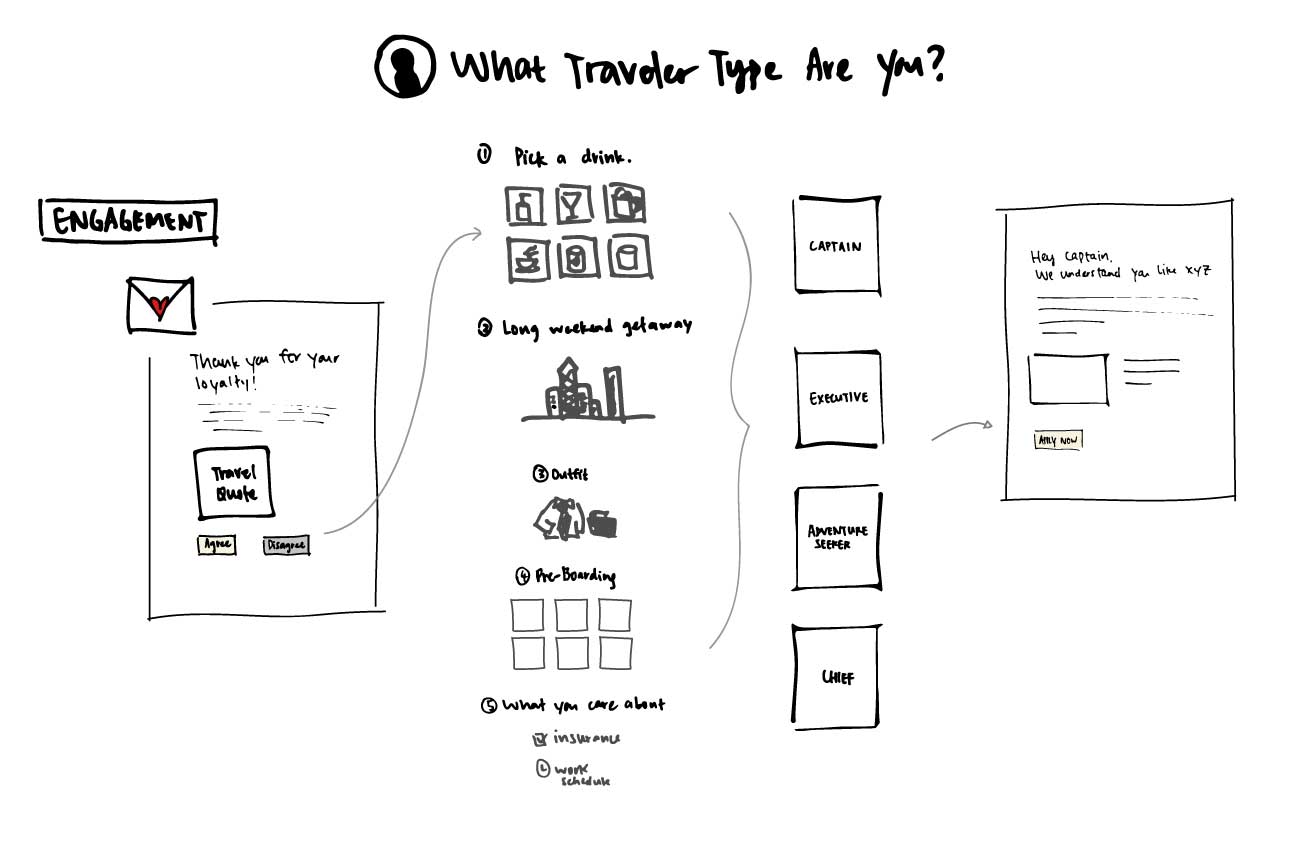
User Journey Flow from the Engagement email, to Engagement survey, to Acquisition email
Designing the Engagement
There are two challenges to this piece. First, how do I get users to click on the Engagement Email? Second, once they land on the Engagement Survey, how do I get them to complete it?
The idea sparked when I was on Flipboard and came across this pop-up.
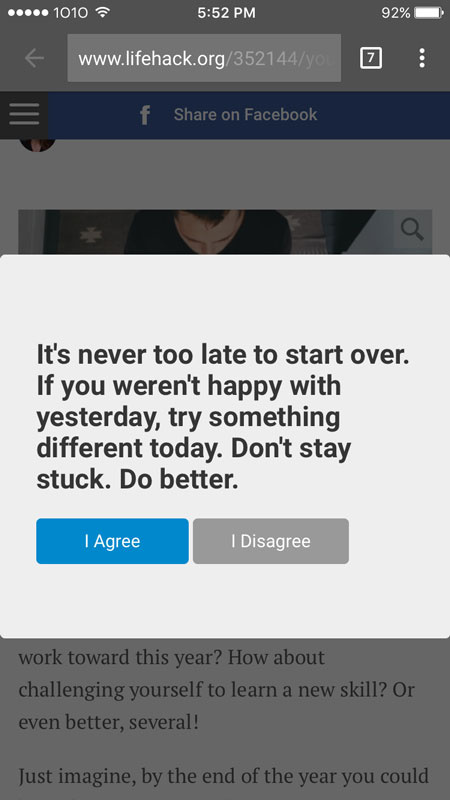
So this is what I did for the Engagement email.

We A/B tested the subject title and travel quotes, and the open rates skyrocketed to 40+% open and 10+% for click rates.
Whether you agree or disagree, brace yourself for a just-for-fun Engagement Survey.
So Tell Me, What's Your Travel Persona?
The trick to designing the survey is it isn't just about fun, viral content. It should serve a purpose.
The survey was about users’ travel and lifestyle preferences and outputs with a travel persona. In addition to engagement, I identified the offers' competitive advantages and used them as anchor points to gauge the user's interest.
Feel free to give it a shot yourself!

Depending on your answers of course, you get one of four personas.

Most of us, it seems, are Adventure Seekers at heart.
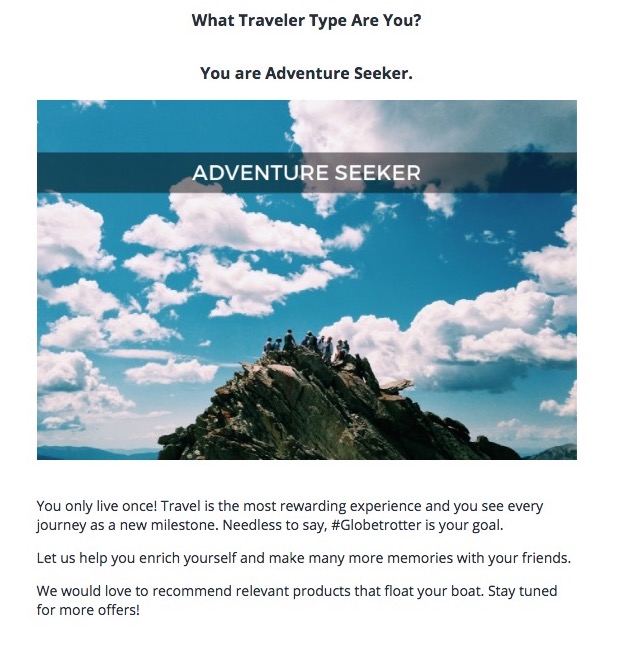
We hit a good 10% completion rate, which was quite impressive given there was no offer attached.
Of course, great things build expectations. So after kicking off with a successful engagement piece, my fellow Data Scientists got cracking with the survey data and personas so we could follow-up with an acquisition email a week later.
Acquisition Email
This is where the magic happens. Each persona was pre-assigned to a set of personalized content. All we have to do is map them to the corresponding persona.
For those who had not completed out the survey, we assigned them to a travel persona based on characteristics such as demographics and transactional behavior.


